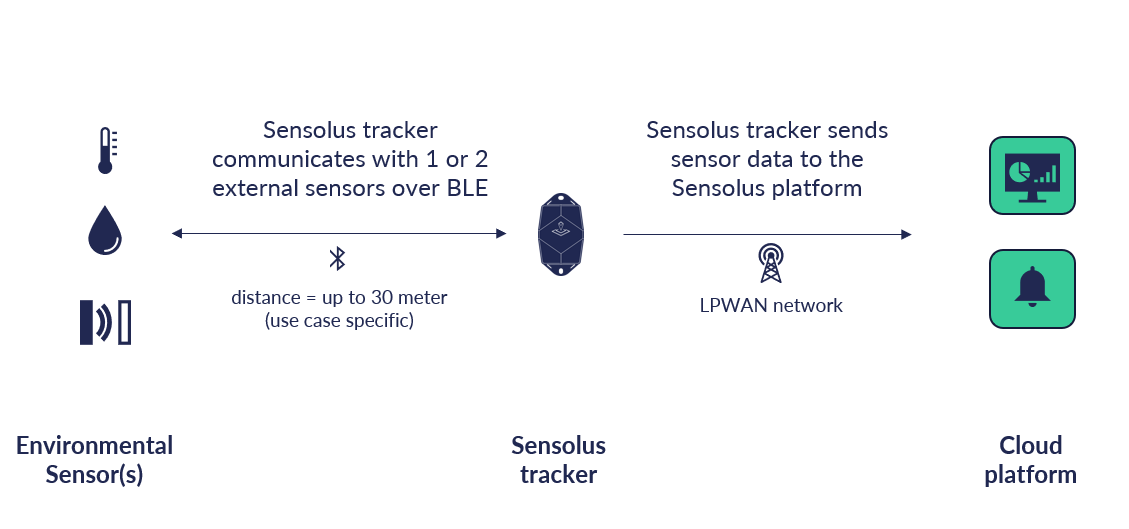Functionality of environmental sensing
To measure environmental parameters an external sensor is paired with the tracker. This sensor connects over BLE to the tracker. This means the sensor can only be maximum 75 meter away from the tracker. The data travels then from the sensor to the tracker where after it is sent to the Sensolus cloud platform over the LPWAN network.

The tracker can use multiple strategies to determine when to send the measured environmental data to the Sensolus platform:
- Periodic: send at fixed time intervals.
- Trigger-based: send when a predefined threshold is exceeded.
Periodic sending
When sent periodically the environmental sensor data is measured on fixed time intervals and sent in group to the cloud.
This measurement strategy is covered by the data recovery strategies.
Trigger-based sending
When sent in trigger-based way the environmental sensor data is sent immediately when specified thresholds are exceeded. The thresholds are defined in the tracker profile that can be created on request.
This measurement strategy is covered by the data recovery strategies with priority.
Trigger-based sending can be combined with periodically sending strategy.
The data can be consulted on the platform but if needed the sensor data can also be retrieved via a BLE enabled mobile phone. Via the use of a third party app the historical data can be retrieved.
The difference between polls, measurements and sending strategies
Sensor poll raw measurements depend on the defined polling interval. Every polled value is kept and used to calculate the measurement. When a measurement is calculated depends on the defined measurement interval. The sending message strategy (periodic or trigger-based) then defines when the measurements are sent to the Sensolus platform.
- polling interval: 5 minutes
- aggregation measurement function: max
- measurement interval: 20 minutes
- sending strategy: periodically sending (one hour)

Figure 2. Environmental sensing explained
Linking a sensor to a tracker
Before a tracker can send environmental data to the Sensolus platform, the sensor should be linked to a tracker. There are two data channels available on the Sensolus tracker for external sensor data.
You can choose to do the following:
- Link one sensor that provides one metric (for example temperature) to the tracker (only one data channel is used).
- Link one sensor that provides two metrics (for example temperature and humidity) to the tracker (both data channels are used).
- Link two different sensors that provide each one metric (for example a temperature and a
presence sensor) to the tracker (both data channels are used).Note: due to battery life impact, linking two separate sensors to one tracker should be applied only in very specific use cases.